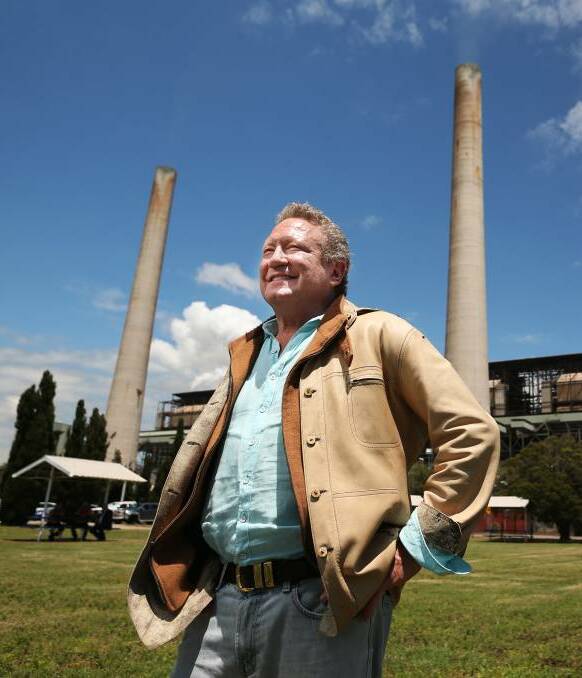
The water saved from the closure of Liddell Power Station would be almost equal to what is needed to replace the plant's coal-fired output as green hydrogen.
AGL revealed the synergy as discussions between the company and Fortesque Future Industries about how to proceed with the water-intensive proposal reach a critical junction.
FFI chairman Andrew Twiggy Forrest, who launched the feasibility study at Liddell in late 2021, said the joint venture project had the potential to create about 1000 jobs.
An announcement about the outcome of the study is expected by the end of the year.
In a sign of confidence, two of Japan's biggest energy companies - Inpex Corporation and Osaka Gas were linked to the project as part of an expanded feasibility study.
The clean energy generator would form part of an emerging Hunter hydrogen export hub, which has also attracted interest from potential customers in South Korea and Singapore.
The plant's hydrogen would also be used to supply domestic industry.
The 2000 megawatt capacity Liddell Power Station and the neighbouring Bayswater plant previously consumed a combined 62,000 megalitres of water annually.

The closure of Liddell will result in a saving of 8,000 megalitres.
Large volumes of water are critical to hydrogen production, with about nine litres of water feedstock required to produce a kilogram of hydrogen gas.
The process of using electricity to split water into hydrogen and oxygen is called electrolysis. Modelling shows that about 9,000 megalitres of water would be needed to fuel a two gigawatt electrolyser.
Andrew Forrest said the Hunter's renewable energy infrastructure was second to none during a visit to the site in 2021.
"The change we are going through will be bigger than anything we have ever seen; it will be a greater change than the industrial revolution. And we ladies and gentlemen here in the Hunter are at the heart of it," he said at the time.
"I would like to see the Hunter become one of the great pearls if not the great pearl of the renewable energy product and fuel sector of our planet and of our country."
Mr Forrest was in the state's Southern Highlands on Friday to celebrate the start of power generation from the Bango 224 megawatt wind farm.
"On this very day, at this time, Liddell - that massive coal-fired monster - finally shuts down officially at the same time as we open up a new green future," Forrest told a gathering at the opening of the wind farm.
In addition to potential hydrogen production, the NSW Government has approved the construction of a 500 megawatt/2 gigawatt hour battery for the Liddell site, which will be transformed into a 10 hectare clean energy hub.

AGL chief executive Damien Nicks said on Friday that the site would be part of the company's future for many years.
"The next couple of years will be spent getting (the site) ready for rehabilitation, but then it's about turning this into an industrial energy hub," he said.
"We want to bring on board batteries and other forms of industry. This is a fantastic site with great infrastructure, like access to the grid. We will be here for many decades to come."
The project will include an estimated $1 billion-plus portfolio of industries including agriculture, clean energy and firming technologies, composting, coal ash recycling, green metals and advanced manufacturing projects.
The proposed 250-megawatt Muswellbrook Pumped Hydro project and the proposed 350-megawatt Bowmans Creek Wind Farm are other key components of the hub.
The pumped hydro project, a joint venture with Idemitsu Australia, recently received $9.45million to advance feasibility studies. A final investment decision is due in 2025.
To see more stories and read today's paper download the Newcastle Herald news app here.







